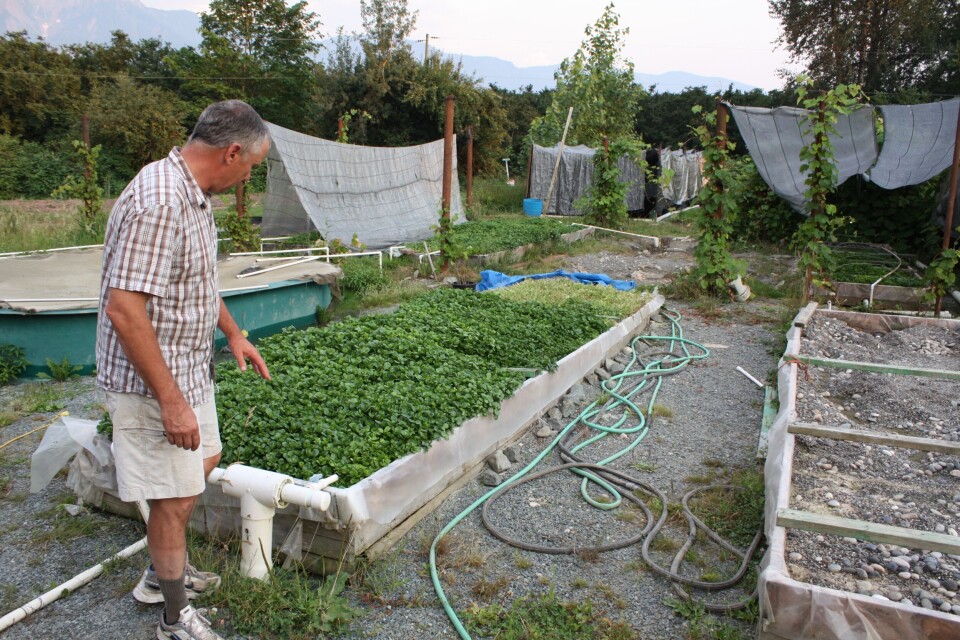
Norwegians in Canada to learn aquaculture
Much media coverage has recently been dedicated to the combined culture of fish and plants such as vegetables and flowers in such settings as urban neighbourhoods and greenhouses. Even in open ocean settings, the principles of Integrated Multi-Trophic Aquaculture (IMTA) are heralded where multiple species are produced in an environment where one species (shellfish, seaweeds) benefits from nutrients released by another species such as salmon or farmed cod. This idea has obviously caught the interest of researchers in Norway, according to this article by Caroline Zentner of the Alberta Lethbridge Herald;
| The Aquaculture Centre of Excellence at Lethbridge College has attracted international interest and Friday it hosted a group of Norwegian researchers and advisers looking to explore the possibilities of establishing an aquaponics operation in Evje, Norway. Dag Oscar is the national representative on the nine-member team that included growers, fish farmers and scientists. “The purpose of the visit is to learn about the integrated growing system that you have here in this aquaponics system in which you grow plants and fish together,” Oscar said. “We don’t do that in Norway. We are looking at the opportunities to do similar growing systems in Norway.”\ Salmon farming operations in Norway are blessed with the warm waters of the Gulf Stream, so they never freeze over. Having plenty of fjords and having nearly every island populated has meant plenty of opportunities for fish farms. “But we probably should look at also other systems, to move them on land, to control the parameters also to provide nutrients for greenhouse production in Norway. I think that would be a nice thing to do in the future,” Oscar said. Oscar said planning will begin almost immediately after the group returns to Norway. “We want to form projects and to look if we have competence within fish farming, for instance, that we can combine with the greenhouse technology and the aquaponic concept that we have learned from Canadians,” he said. The group also visited the aquaponic operation at the Alberta Agriculture Crop Diversification Centre in Brooks Thursday. The Norwegian contingent is looking at the possibility of growing a niche crop such as brown trout which would not attempt to compete with the Atlantic salmon and rainbow trout grown in Norwegian fish farms now. “This is exciting to us to have someone come from another country realizing we’re doing something here that’s of benefit to other people,” said Clay Boyes, facility production manager at the Aquaculture centre. Aquaponics combines fish and plant systems into one. Water leaving fish tanks is rich in nutrients and can be used for plant growth. In turn, plants are used as biofilters to reduce the buildup of mineral waste and nitrogen in the water before it is return to the fish tanks. “We’ve been doing this for quite some time. We’ve been working with fish for quite a while, we’ve been working with aquaponics for probably the last 10 years,” Boyes said. |





















































